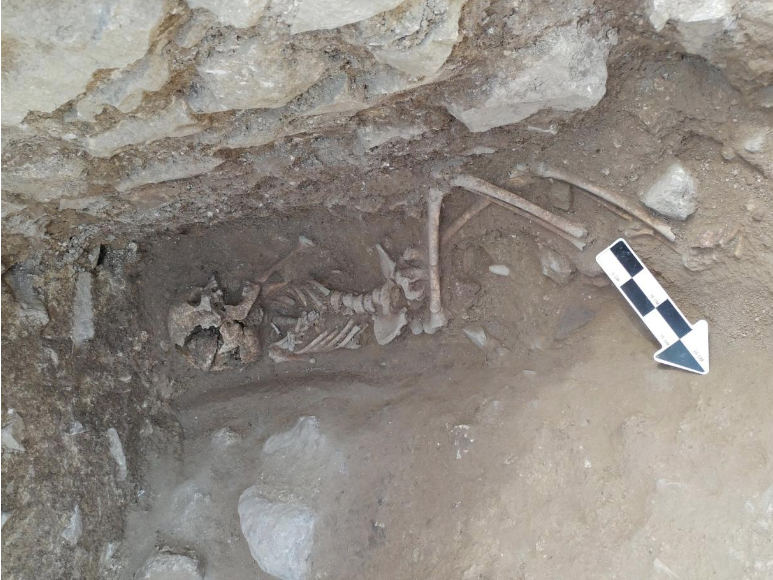A 4,200-year-old “zombie grave” has been unearthed in Germany. The burial site was found during excavations near the town of Oppin by archaeologists from the Department for Monument Conservation and Archaeology of the state of Saxony-Anhalt.
The remains in the Bronze Age tomb belong to a man who died between the ages of 40 and 60. Researchers noted that a large stone block was left on top of the lower part of the body and said that this was probably placed to prevent the deceased from resurrecting.
“We know that even in the Stone Age people were afraid of ghosts. Back then it was believed that the dead sometimes tried to come out of their graves,” says Susanne Friederich, Project Manager.
Archaeologists link this burial site to the Beaker, or bell-shaped pottery culture. This people emerged in Europe around 2,800 BC and spread to the west of the continent and parts of Africa. The Beaker people are characterized by leaving items such as pottery in graves.
‘Zombie’ grave — dating back 4,200 years — discovered in Germany, photos show https://t.co/BFWXfGAb26
— The Sun News (@TheSunNews) April 20, 2024
Zombie graves have been uncovered across Europe, some of them more recent, indicating a fear of the dead rising from the dead. In some burial sites, stones were tied to the limbs of the corpses to pull down their weight, while in others stones were placed in their mouths.
In 2018, a 1500-year-old cemetery was discovered in Italy, where more than 50 babies and children were buried. A stone was placed in the mouth of a 10-year-old boy, the oldest person in the cemetery, which is thought to be the burial place of children who died in the malaria epidemic that broke out around 450 AD.
“There was a great fear of mysterious forces and ghouls (such as witches) who could use the spirits of the dead for their own gain,” anthropologist Dr. David Soren of the University of Arizona later told Live Science.
Stones placed in the mouth or on the corpse to protect the unharmed community were seen as apotropaic (having the power to ward off evil).
source: Heritage Daily, Yahoo, IFL Science, Live Science





